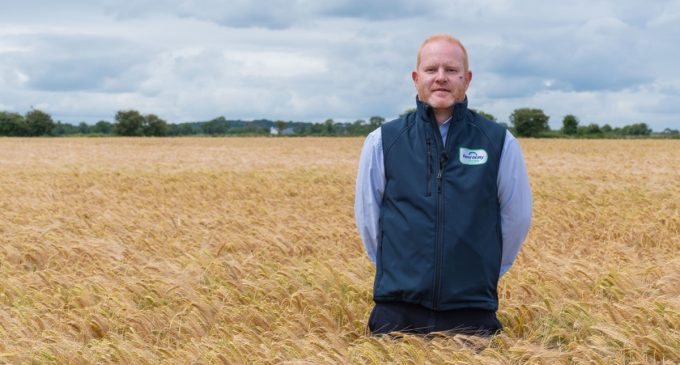Growing Resilient Winter Cereal Varieties With Fane Valley.

Harvest 2022 was memorable for all the right reasons with ideal conditions for getting grain cut and dried, and straw gathered up and undercover. Now agriculturalists attention turns to autumn drilling and selecting the most suitable variety for farming.
Fane Valley offer a carefully selected portfolio of varieties to help build resilience into any cropping plans by selecting varieties which combine the best traits in terms of yield, quality, and disease resistance to help reduce risk on y the farm whether growing cereals for grain or whole crop silage.
In terms of winter wheat, Graham continues to be a top performer. Graham is in the top 3 highest yielding feed wheats on the Recommended List (RL) and consistently delivers on yield and quality. It is a relatively early maturing variety offering great flexibility, performing well from early and later drillings.
Mayflower, new to the RL in 2022, is a robust, low risk wheat with very high untreated yields and excellent grain quality. Mayflower boasts an unrivalled disease resistance package against all wheat diseases and has notably better resistance to eyespot than many other popular choices. Mayflower is well suited to early drilling and will also performs well in a second wheat situation.
Theodore combines high yields with the top score on the RL for Septoria resistance and has proven to be well suited to local conditions for both grain and whole crop silage.
KWS Extase, another popular choice is a very high yielding variety with excellent grain quality and a solid agronomic package. KWS Extase has very high resistance to Septoria but because of its very early spring vigour is best drilled from the latter half of September onwards.
They can also offer Spearhead, the highest yielding wheat on the Irish RL, Spearhead has looked very promising in trials this year and combines very high yield potential at an early harvest.
This year, Fane Valley have developed a wheat blend, combining the best characteristics of three varieties to build resilience by pulling together their individual genetic strengths in the field with the aim of boosting disease resistance, yield and quality.
When looking at winter barley on the RL, KWS Tardis, Bolton, Bordeaux and Valerie are the standout varieties in terms of yield, and overall performance. Bolton and Valerie have performed consistently well locally over the past number of years and this season are joined by two newcomers KWS Tardis and Bordeaux, both very high yielding varieties with excellent grain quality and strong agronomic traits in terms of lodging and disease resistance, sure to be popular choices on farm going forward. Cassia will also be available and still leads the pack in terms of grain quality, with the highest specific weight on the RL.
Hybrid barley varieties offer great consistency in yield offering around 2% increase in yield over conventional varieties without compromising on grain quality. Research by ADAS has shown that hybrids are highly competitive with grass weeds and provide good suppression of brome and reduced brome seed return over conventional barley and wheat. This could be a useful building block for the integrated management of difficult grass weed species like brome in arable rotations. Hybrid varieties are more vigorous and grow earlier in the spring so are best suited to drier land as their spray timing will be earlier than with conventional barley varieties. Varieties this season include Bazooka, Belfry, Kingsbarn and Thunderbolt.
Mascani remains the winter oat variety of choice for milling, renowned for producing good yields of quality grain with high kernel content and low screenings. Mascani also has one of the best combinations of yield and disease resistance with above average scores for lodging resistance.
The popularity of hybrid rye continues locally and when grown as whole crop provides an excellent second forage to supplement grass silage diets. This season we can supply the varieties KWS Serafino and SU Arvid, a high biogas yielding variety well suited as a feed stock for anaerobic digesters. Hybrid rye is best sown from mid-September through to mid-October and is a relatively low input crop in comparison to other cereals.
While variety selection is the first line of defence against disease, seed treatments are the starting point of the disease control programme in cereals. Seed treatments are the only way of reducing seed borne diseases like smut and seedling rots which are covered by single purpose dressings (SPD) and for soil borne diseases such as take-all which can be reduced by Latitude seed dressing.
More technical seed treatments such as Vibrance Duo and Take off can be applied to seed which also improve crop vigour and resilience offering added protection through the winter, especially in cold wet seed beds. Manganese, applied as a seed treatment is particularly beneficial to the establishment of the crop where cereals follow grassland are a second or third cereal, in high pH soils, soils, which have recently been limed, high P low K soils, where there is poor drainage or in puffy unconsolidated seed beds.

































